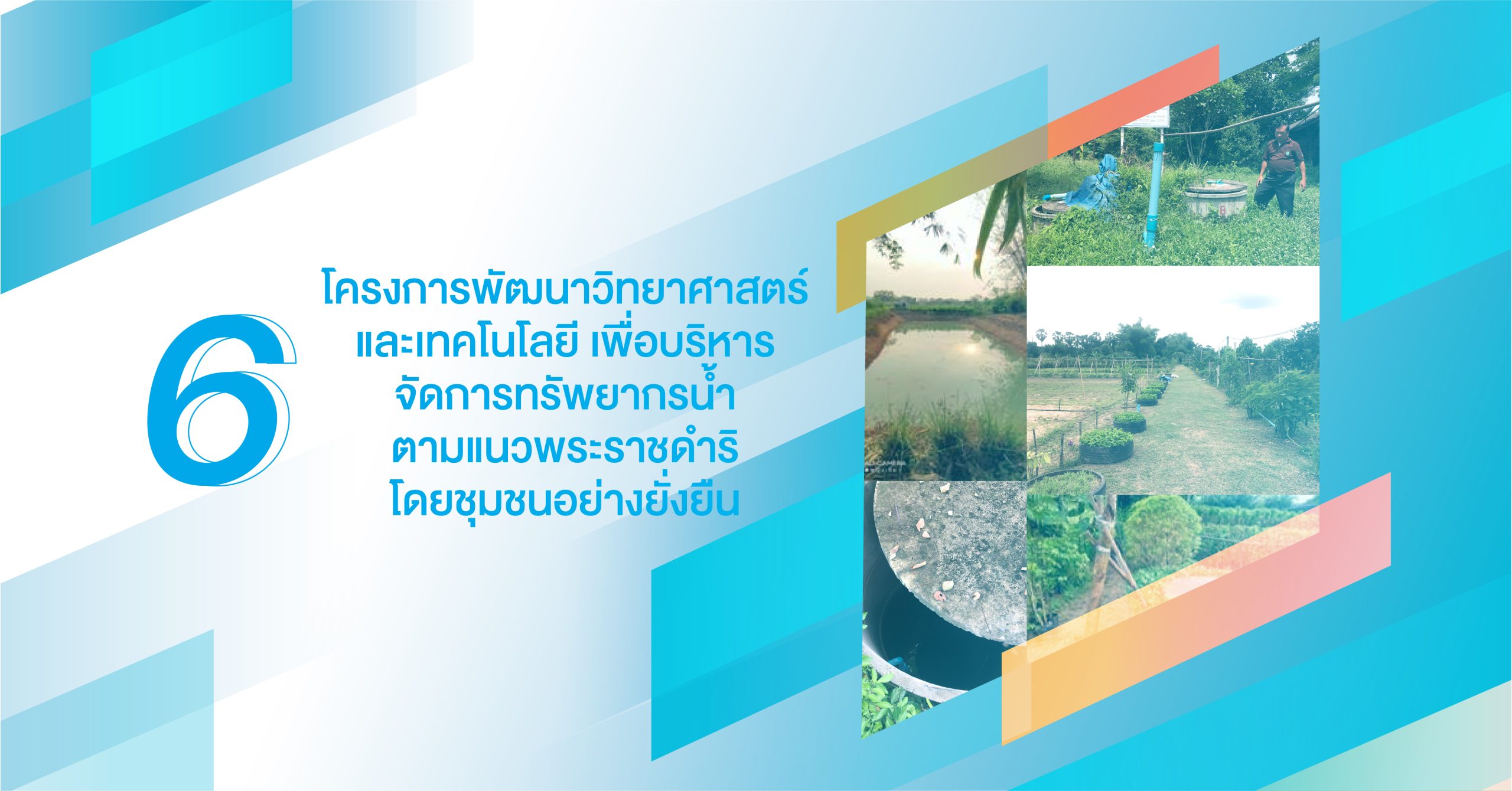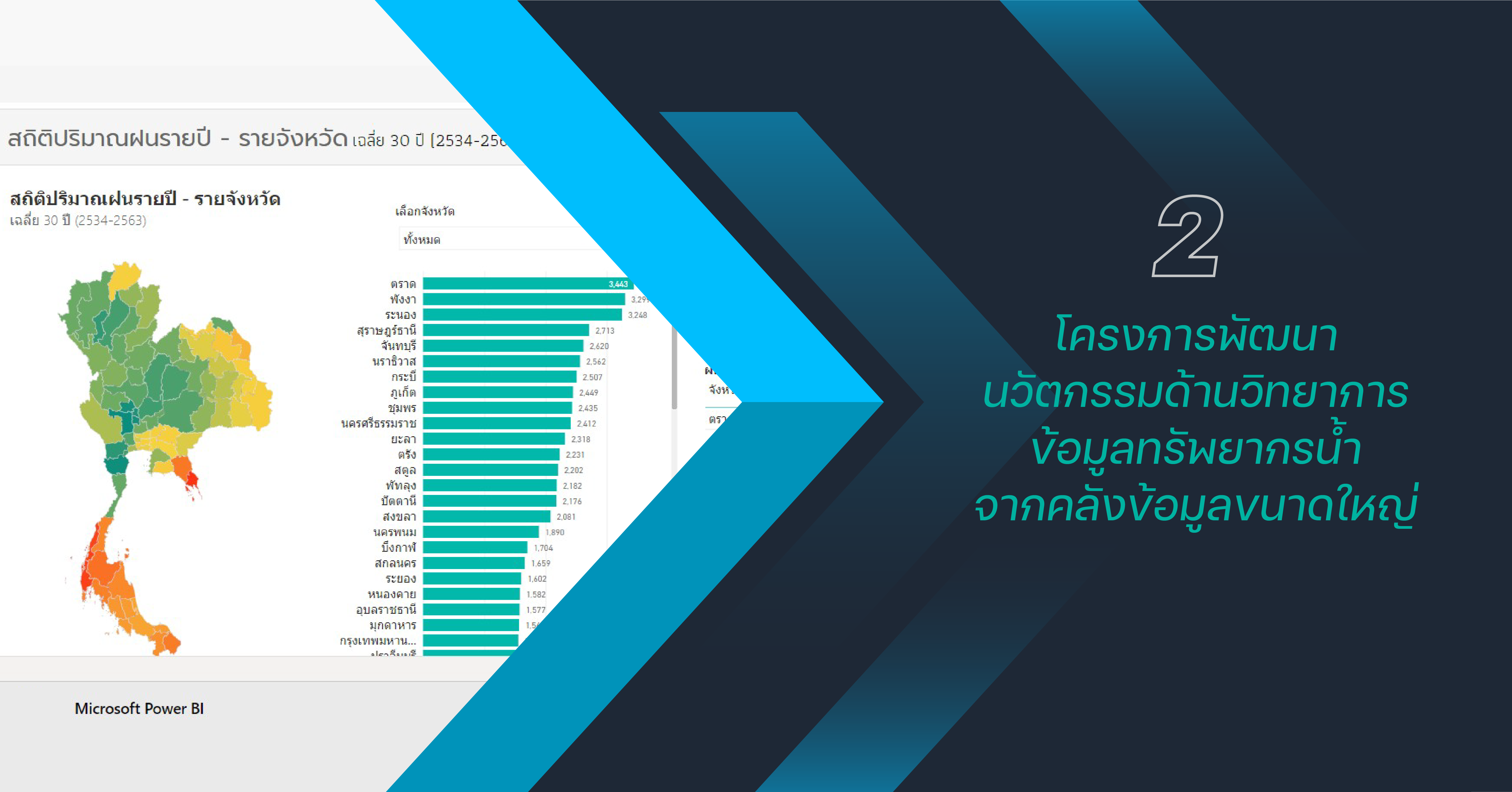
2020: Science and technology development project for sustainable community water resource management following H.M. King’s initiative
14/01/2020
Science and technology development project for sustainable community water resource management following H.M. King’s initiative aims to convey and expand the application of science and technology to develop local people and communities to be able to do water information and local water map that can be used to support operations, management, and set up development plan in appropriately way which lead to sustainable in water, food, community economy. and energy.

The country’s water situation has corresponded with HII’s 20-year operation framework (2018-2037) on water resource management by using science and technology for sustainability and linkage H.M. King’s initiative on implementation and transfer for collaboration and get involvement from core community. By doing so, HII has examples of applying science and technology that are important for water resource management at national, local, and community levels, including data usage from water situation and database from local level. HII also promoting and supporting self-sufficient water resources management, increasing water capital, reserve water for consumption and agriculture, cultivation plan to increase productivity and income which can solve poverty problem, accessible to resource, reduce social disparity, develop the quality of life towards sustainable, prosperous, and sustainable.

The operations result in the year 2020, HII has supported communities to become self-reliant, land restructuring and technology usage, including be able to expand their knowledge on community water resources development from 60 core communities in 19 watershed areas and community network of 1,773 villages to neighbor areas which an example of application on science and technology that is important for water resources management at national, local, and community level. It also creates an example of a new theory agriculture totaling 6.08 square kilometer, reducing household expenses by 19.2 million baht per year, increasing household income by 54.2 million baht per year, and increasing production in dry season by 3,873. Million baht, flood relief over 4,800 square kilometer, and reducing government compensation more than 2,500 million baht.
Example of water resources management through water circulation system at Dong Khi Lek community, Mueang District, Prachinburi Province.
Dong Khi Lek Community located in low area and faced water shortage in the dry season and floods in the rainy season every year. There is Kasian canal as the main canal which receives water from Khao Chi Pid, but the canal condition is abandoned, shallow, cannot reserve the water. Originally, the villagers were engaged in rice farming, but later they converted rice fields into bamboo, which eventually died due to drought. They then turned into ornamental flowers planting, but encountered conflicts over water due to insufficient water. Then, the community started to survey the area for water resources and examine the community’s water usage and found that the community needed 55,000 cubic meters per day. Therefore, the idea of building a reservoir emerged, which would require a construction budget of over 153 million baht.

Work plan
1. Create a common understanding and clear picture of geographic area between villagers, start from exploring the waterways, prepare a water map for entire subdistrict, showing the direction of water flow, and examine the community’s water usage before planning to build a reservoir.
2. Increase number of reservoirs to reserve more water for agriculture by build and develop water structure, water storage containers, restore Khao Chi Pid reservoir, checkdam and monkey cheeck construction for consumption and agriculture, dredge up farm pond or underground checkdam, have their own water storage facilities in their agricultural area. The entire subdistrict has approximately 2,000 underground checkdams.
3. Enhance household water consumption and distribution with floating solar panels on the water (floating PV) with a capacity of 2.5 kw. for water distribution into the village’s water supply system and water spillway in Huay Kasiyan reservoir.
4. Linkage water network and managing water gates by restoring 5 connecting canals such as Sai Kai canal, Fun Pla canal, Yang canal, ruea canal, and Krathon canal, including enhance water resource structure by dredgd up canals to coverd 14 villages in Dong Khi Lek community.

Water resources management by “Water Circulation”
Dong Khi Lek community is Thailand’s largest breeding center for ornamental flowers and decorative plants which entire sub-district has combined savings more than 480 million baht. Drought problems can be solved by creating water circulation which is one of water management and land allocation that allow multiple used of water and become self-reliable water management. By doing so, create underground check dam for storing water and use for agriculture, then dredge up pond and use solar power water pump to pump water back to the household. Dong Khi Lek community become pilot area that able to solve drought problem, increase farming production, income and occupancy become reliable.

Example of “Water Circulation”
1. Install totaling 23 circulation retention ponds size 9 meter deep for household used and reusable. The water will go through soil, stone, and sand layers then flow back to retention pond which able to save water during dry season and maintain humidity in agriculture area.

2. Solar power water pump in Khao Chi Pid Reservoir pump the water through water pipes and stored in the water tanks on the mountain for agriculture used (hillside area above the reservoir) then it will flow back to Khao Chi Pid Reservoir and during the water flow, it will help increase humidity in watershed area.

Successful
• Solve flood, drought problem and restore water resources totaling 52 km., and more than 1,113 farm ponds are being used as water storage for consumption and agriculture used. Water capital increased more than 1,486,647 cubic meters which able to use for tap water in the village.
• Food and power security: New theory agriculture, and watershed conservation can generate additional income over 1,390,000 baht per year. Solar power water pump can save costs up to 50 percent per year.
• Strong community: generate 12 community funds and successfully expand to cover 14 villages. There are 10,256 beneficiaries, 2,764 households, and over 5.6 square kilometers for agriculture. In addition, the concept of Prachinburi River Basin management was expanded to a community network more than 46 sub-districts in 2 provinces.




